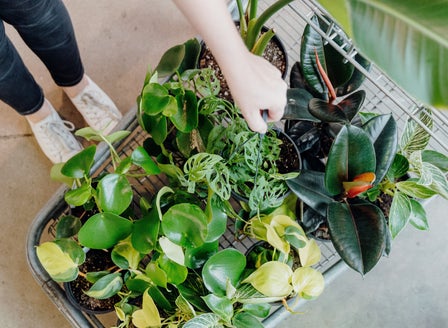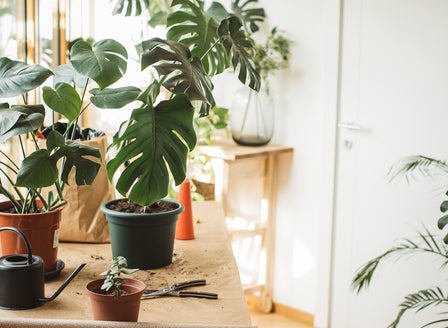One of the easiest indoor plants to grow. Sansevieria, also known as snake plants, are striking and modern plants, stunning in both homes and offices. They are tolerant of dark corners and thrive when neglected.
Planting Calendar
Sansevieria are available throughout the year as Indoor Plants
Prepare
Position
Indoors Sansevieria grow best in bright filtered light but will also grow in a darker corner of the home. Sansevieria can also be grown outdoors in a sunny to partly shaded area that has impeccable drainage either in containers or in the garden.
Soil
Indoor Sansevieria are best grown in Kings House plant mix, outdoors they can be grown in pots with Kings Potting mix. If growing in the garden ensure that the soil drains well, additions of sand or fine pumice will improve the drainage.
Plant
Repot Sansevieria in spring into a pot twice the size as the previous one, using King's House Plant Mix. Look out for the sides of the growing pot for bulges, this indicates your plant needs repotting
Care
Watering
Your Sansevieria requires very little water. A good water once every 2 weeks in summer should be enough. In winter a little once a month. Let the soil dry out completely before applying more water and ever allow the roots to sit in water.
Feeding
Feed your Sansevieria with Kings House Plant Liquid Food as per the instructions on the bottle
Protecting
Mealybug can at times be a issue with Sansevieria. If needed spray with Groventive Garden.
Pruning
Apart from cutting off any old leaves or flowers spikes they do not need pruning.
General Care
When using sprays, chemicals or fertilisers always read the label and follow the instructions. Apply sprays in the evening to avoid harming beneficial insects. Repot sanservieria in spring. Repot into a pot twice the size of the previous one, using Kings House Plant mix. Watch out for bulging on the sides of the pot as this indicates that your plant is in desperate need of repotting.
Beginner Tip
You are more likely to kill a Sansevieria with kindness, a little neglect with these plants is the secret
Tip
The foliage may get a little dusty. Wipe the leaves very gently with a damp cloth to keep your plant healthy and looking good.
Top Varieties
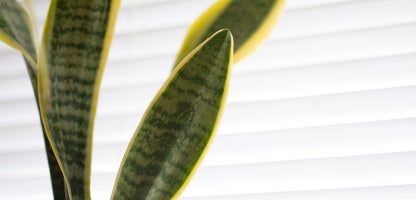
Sansevieria trifasciata
A tall growing upright variety with cream-yellow edged leaves with horizontal stripes in silver and green. Growing up to 1.m
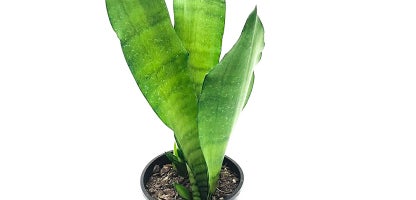
Sansevieria moonshine
A smaller growing variety which has broad upright silvery pale green leaves with dark green edges. Growing to 60cm.
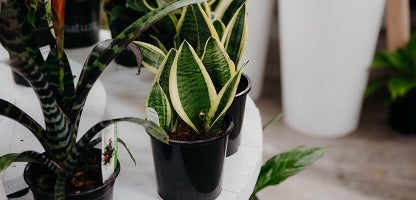
Sansevieria lotus
A dwarf star shaped variety with dark green leaves edged in yellow. Lotus only grows 15cm, making it great for the desktop.
Frequently Asked Questions
The leaves on my plant have gone wrinkly, what has happened?
This usually occurs if the plant has dried out for too long. Allow the soil to dry out then re water. They can take periods of dryness, but not for too long. Never allow the plant to sit in water.
My Sanseveria has got too big for the pot it is in, what should I do now?
You can repot your plant into a bigger pot, use Kings potting mix and a slightly larger pot. You can also divide your plant up and plant into new pots. Sanseveria is easy to divide up into sections and replant.
How often should I water my Snake Plant?
Your Sansevieria requires very little water. A good water once every 2 weeks in summer should be enough. In winter a little once a month. Let the soil dry out completely before applying more water and ever allow the roots to sit in water.
Are Snake Plants toxic to pets?
Yes, Snake Plants are toxic to pets if ingested. They can cause nausea, vomiting, and diarrhea in dogs and cats, so it's best to keep them out of reach of your furry friends.
Can Snake Plants purify the air in my home?
Yes, Snake Plants are known for their air-purifying qualities. They can remove toxins such as formaldehyde, benzene, and xylene from the air, making them a great choice for improving indoor air quality.
